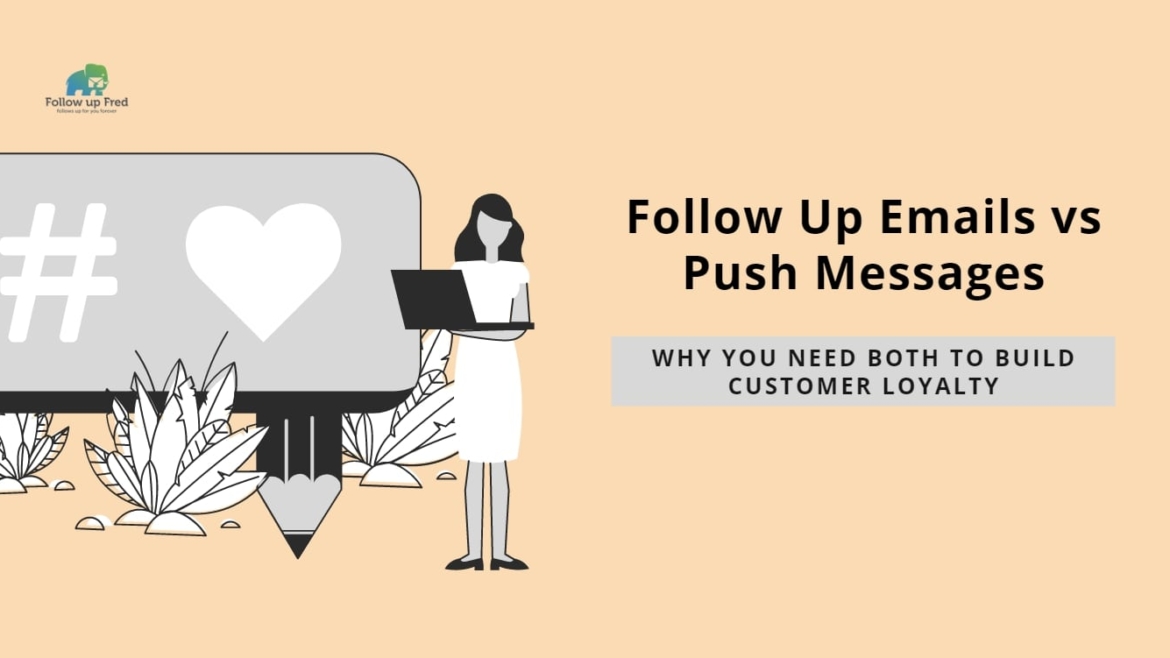Customer Loyalty Through Better Communications
It costs five or more times as much to attract a new customer as it does to retain an existing one, and existing customers spend nearly double as much on average as new customers do on each purchase, so it makes sense to do the work to keep your existing customers, right? With trust already built, it’s easier to keep selling to them than to start all over with someone new. And those existing customers are your best marketing tool anyway, since word of mouth and social proof are the gold standard of marketing tactics. And with so many different ways to maintain the lines of communication, from push messages to follow up emails, building customer loyalty is a piece of cake, right? Right.
Thing is, building customer loyalty has no one-size-fits-all solution. Not everyone responds to the same kinds of communication. You need to be communicating to the customer in the way they prefer in order to truly make an impact. Don’t worry, though, it’s not as complicated as it sounds! If you’re wondering how to build customer loyalty, we’ve got a few ideas for you.
Why Focus On Retention, Anyway?
There are always more fish in the sea, and isn’t that what marketing is for, going out and getting those fish? Well, yeah, but retaining customers is cheaper and more profitable. Did you know that on average, a 5% increase in customer retention equals a 75% increase in profits? Did you know that word-of-mouth is still one of the most trusted ways for new customers to discover you, so every customer you keep is a potential source of new customers without spending a ton on marketing to them?
Existing customers are easy to market to! You’ve got all sorts of data on them. You know what makes them tick, you can use that data to help identify their priorities and address them. Customer retention strategies are all about building and maintaining a strong relationship with your customers, and thanks to marketing automation and digital communications, that kind of relationship building is scalable, repeatable, and cost-effective.
Every part of the customer experience plays a part in retention. However, let’s focus on communicating. All the great customer experience stuff in the world doesn’t matter if we don’t build a strong relationship with our customers, and the way to do that is to communicate!
Push Notifications: Get Their Attention, Anywhere
Mobile-first isn’t just a mantra anymore, it’s pretty much the accepted common truth of the business world. Let’s face it, our smartphones are the primary way most of us interact with the internet and the wider world; many of us can go days without turning on a computer outside the office (and many millennials don’t even have a computer anymore) but we’re on our smartphones everywhere, every day. This makes push notifications potentially a gold mine, if they’re implemented thoughtfully and in accordance with best practices.
That’s not to say that push notifications are only a mobile tactic; while app push notifications work with mobile apps, web push notifications work on any browser. However, either type tends to be most effective in targeting mobile users. What’s the difference between the two types? Let’s explore.
App Push Notifications: Reach Out And Touch Someone
Many businesses have developed their own apps, and these can be great tools for customer loyalty and engagement. App push notifications can use every feature of the phone once the user opts in to the proper permissions, such as cameras, GPS, and contact lists. This gives enormous flexibility; for example, geofencing can trigger a push notification based on the user’s location, so when they’re in the neighborhood you can nudge them to stop by your store, or if you run a swimwear e-commerce store you can ping them when they’re at the beach.
The challenge here is that with five million Android and iOS apps to choose from, and an average of eighty apps per customer, earning a spot on customer phones is no easy feat. You need to make your app relevant and useful, convince people to download it, and convince them to actually use it. Your die-hard customers will download your app, of course, but will your more casual fans be tempted? And will they keep it? That’s harder to say. There’s also the expense of building and maintaining an app, especially when the smartphone ecosystem includes two widely used platforms (iOS and Android) and a successful app should really be available for both.

If you can build a great, customer-first app, though, the rewards are tremendous. You can deliver push notifications based on action triggers or at certain times, and use both in-app behavior and customer data to fine-tune both your messaging and delivery timing. You can use the app itself to drive engagement through recommendations, individualized discount codes, rewards, and other loyalty perks. Best of all, your app is a channel directly between you and your consumers.
Web Push Notifications: Message To The Masses
Web push notifications have some advantages and disadvantages compared to app push notifications, but they are immensely powerful tools in their own right. Native apps can only work with devices that have the app installed; your notification will go to their smartphone, but may not reach them on their tablets or laptops. However, web notifications can’t tap into the phone’s features and can’t support GIFs, videos, or interactive elements. Web applications also don’t require developing and marketing a dedicated phone app, making them an attractive proposition for smaller businesses.
Like app notifications, web notifications require the user to opt-in , with no app download needed. Usually it’s as simple as clicking a button on a pop-up. Once they’ve opted in, they’ll receive these notifications on their phone similarly to app push notifications, but those notifications will also pop up on any device where they’re signed in, so long as they’re running Chrome, Firefox, Edge, Safari, or Opera. While different browsers offer different types of functions with web push notifications, Chrome, the most popular, includes banner image functionality and the ability to add one or two call to action (CTA) buttons.
While web notifications don’t provide the customer data you get from an app, it’s still possible to do segmentation by browsing and purchasing patterns, and to set your timing while automatically compensating for the time zone of the recipient (because no one likes getting notifications at 3am.) This can help ensure you’re delivering the right content to the right user. You can send specific notifications to segments based on what pages they’ve viewed and how long ago they viewed them.
Unlike an app, which appeals mostly to your brand’s most loyal customers, a well-designed opt-in web push notification campaign will get 5-10% of your website’s users to sign up,giving you a broader reach. When looking at your click-through rate for each class of push notification, be sure to take that into account; each type of notification appeals to a different type of customer so comparing their CTRs isn’t really an apples to apples comparison.
By their nature, push notifications have to be short, and because they are often processed as being a bit intrusive since they ping the user’s smartphone, they must build immediate value in very little space. And they require that the customer opts in, even though you already have their contact info. Let’s take a look at an old standby that should also be a part of your customer retention toolbox.
E-Mail: The Classics Became Classics For A Reason
Push notifications require that the customer opt-in, either by downloading an app or opting in on your web page. This is still a necessary part of how to build customer loyalty; just because someone likes your brand doesn’t mean you shouldn’t put in the work to keep them loyal. But what about gmail push notifications?
Wait, email push notifications?
Think about it: email is the OG notification. And you don’t even necessarily need to have the customer opt-in! (Although you should be cognizant of applicable laws, like CANSPAM and the EU’s GDPR.) Good follow-up emails can build customer loyalty through offering relevant and timely information, perks, and other enticements just like push notifications, but as they can be longer and include more interactive or media elements, you can convey a lot more information.
One useful piece of your toolkit here is an email follow-up tool. A good follow up email tool and allows you to craft personalized, automated follow up emails that will continue to be sent automatically until you receive a response. Given that many people are overwhelmed by emails and thus may miss your email, or get sidetracked and not get a chance to take advantage of the offers within, using a follow up email tool can ensure that when they finally have the time to engage with your brand, they’ve got an email near the top of their inbox to engage with. You can set the timing sequence to be more aggressive or more spaced out, and the built-in dashboard tracks both open rates and click through rates.
Email or Push Notification?
So, follow up email or push notification? The answer is both! Your push notifications engage your most loyal customers to keep them in the fold. Email is a great tool to engage newer or less-committed customers and draw them deeper into the fold. Both are a key part of a well-crafted customer loyalty program.
A thoughtful strategy to retain customers,is the best single thing you can do right now to increase your revenue and keep growing. So let’s get out there and do the thing!


